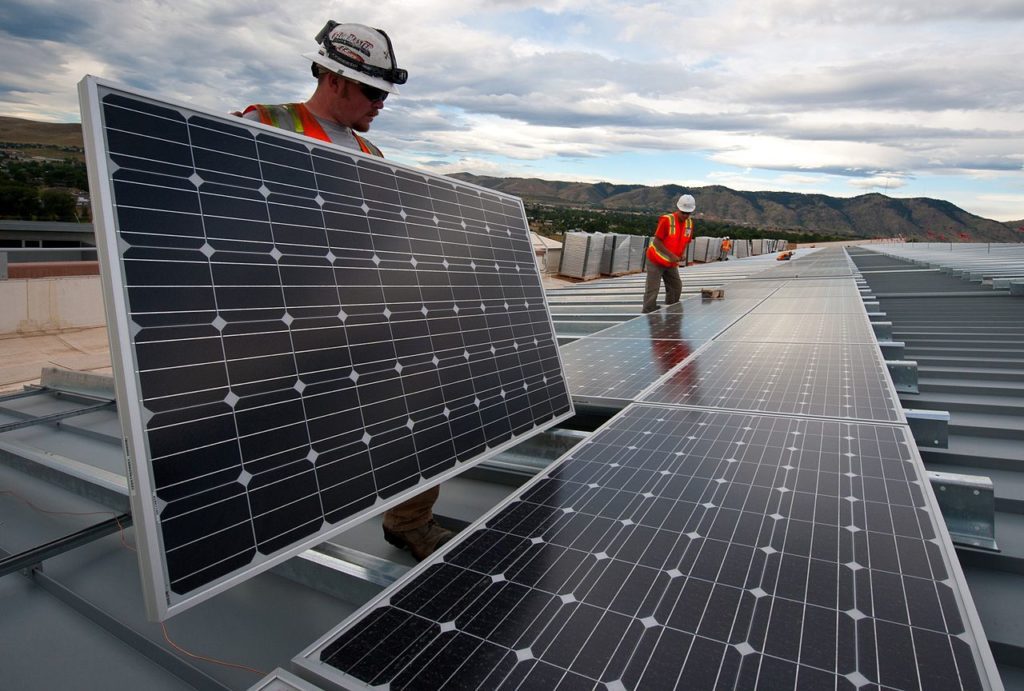By: Jon Seibert, CEO of Vision Solar
A solar photovoltaic (PV) system, also known as a solar power system, supplies solar power through photovoltaics – the conversion of sunlight into electricity using semiconducting materials.
Solar photovoltaic installers, also known as PV installers, assemble, install, and maintain solar photovoltaic systems on rooftops or other structures. PV installers use drills, wrenches, saws, and screwdrivers to put these systems into place — to connect panels to frames, wires, and support structures.
Entry level installers typically perform basic tasks such as installing support structures and placing PV panels on top of them. The more complex duties, such as connecting electrical components, are then performed by experienced PV installers once the panels are in place. PV installers need to work in attics and crawl spaces to connect panels to the electric grid.
Job Outlook for Solar Photovoltaic Installers
According to CNBC, solar photovoltaic installers are among the top ten fastest-growing professions in the United States, with projected growth between 63% and 105% over the next ten years.
Consumers who switch to solar energy can save up to an average of 30% on their monthly electric bills, in addition to other savings in the form of tax and financial incentives. These savings, plus the low cost of PV panels and singles, are a few of the reasons why more residential households are taking advantage of using solar photovoltaic systems. With the continued growth of solar panel users, a high demand for PV installers is expected along with increased job opportunities.
Solar leasing plans are also made available for homeowners who prefer to lease rather than purchase PV systems. This means homeowners who lease the systems will no longer shoulder the upfront installation cost. As a result, this creates more opportunities for homeowners to switch to solar energy, and a higher demand for solar panel installation.
The median annual pay for solar PV installers ranges between $39,240 to $42,680.
Qualifications & Skills Needed
Those who want to become PV installers may take courses at local community colleges or technical schools offering a variety of courses focused on basic safety measures, understanding how PV works, and system design. Course lengths vary by state and locality and typically last a few weeks to several months.
Those with prior experience in the construction field, like electricians, roofers, carpenters, or laborers, may opt to take online training courses. Their training period is usually shortened because they already have an understanding of basic construction duties and can already perform such tasks.
Some solar installation companies require only a high school diploma and provide employees with on-the-job training for a year to learn about PV installation under the direction of experienced installers. This training is essential as new PV installers learn about safety, tools, and PV system installation techniques.
The following qualities are important for successful solar photovoltaic installers to master:
- Mechanical skills – PV installers work with complex electrical and mechanical equipment to build support structures for solar panels; they also need to connect the panels to the electrical system, so electrical knowledge is also essential.
- Good communication skills – PV installers need to communicate effectively with other workers to ensure that proper safety and installation procedures are followed and also need to communicate with clients to ensure customer satisfaction.
- Attention to detail – PV installers should be detail-oriented and know how to carefully follow instructions and perform the correct procedures during installation. Lack of attention to detail may cause the system to not work properly.
- Physical strength, stamina, and balance – Most PV installers work outdoors and need to travel to job sites that require them to lift heavy equipment and materials weighing up to 50 pounds or more. They should be able to climb ladders and crawl spaces many times throughout the day, especially when installing rooftop panels. Physical strength, stamina, endurance, and balance are needed to avoid the risk of falling off the ladders and to be able to carry such heavy objects.
Bottom Line
Many households are converting their energy sources into solar energy. As the solar photovoltaic system business grows, so does the demand for PV installers. As mentioned, solar PV installers are one of the fastest-growing jobs and will continue this growth in the next ten years or so.
Although the duties and responsibilities of a PV installer are quite challenging, there are training courses available to learn the skills needed, and some solar companies are willing to have their new workers trained on-the-job. Building several skill-sets related to construction and PV installation will provide prospective installers with better job opportunities.
